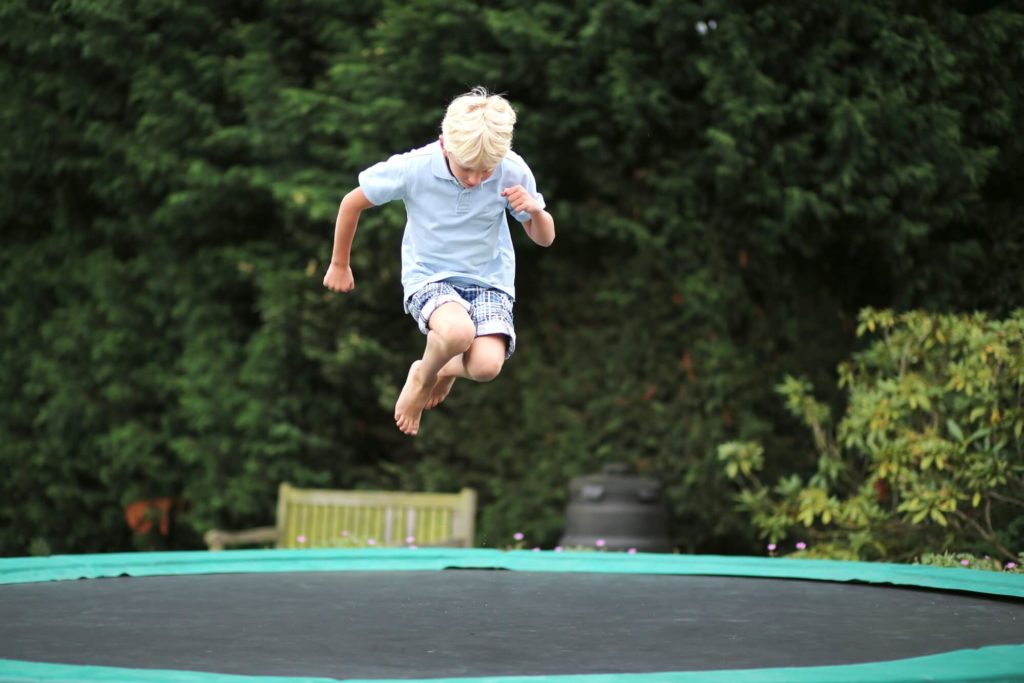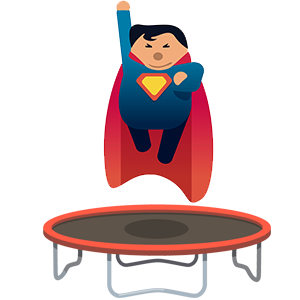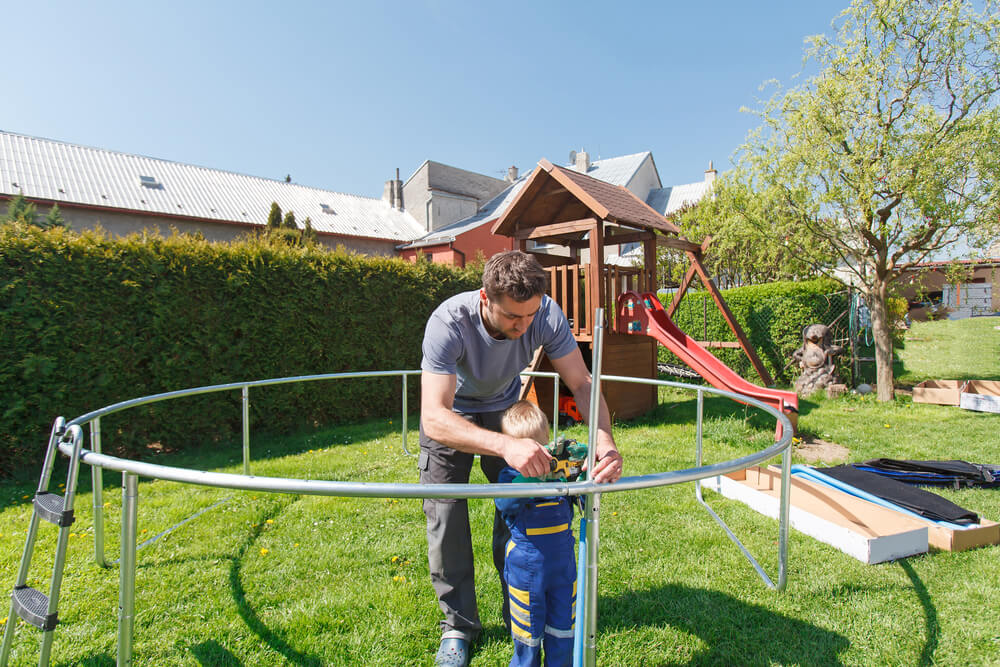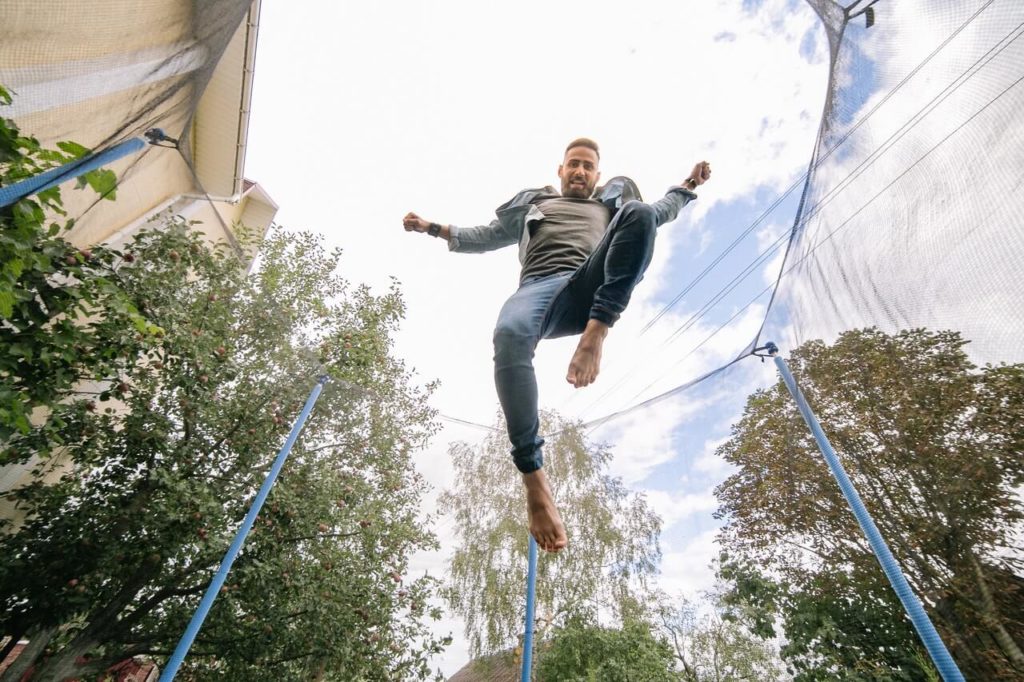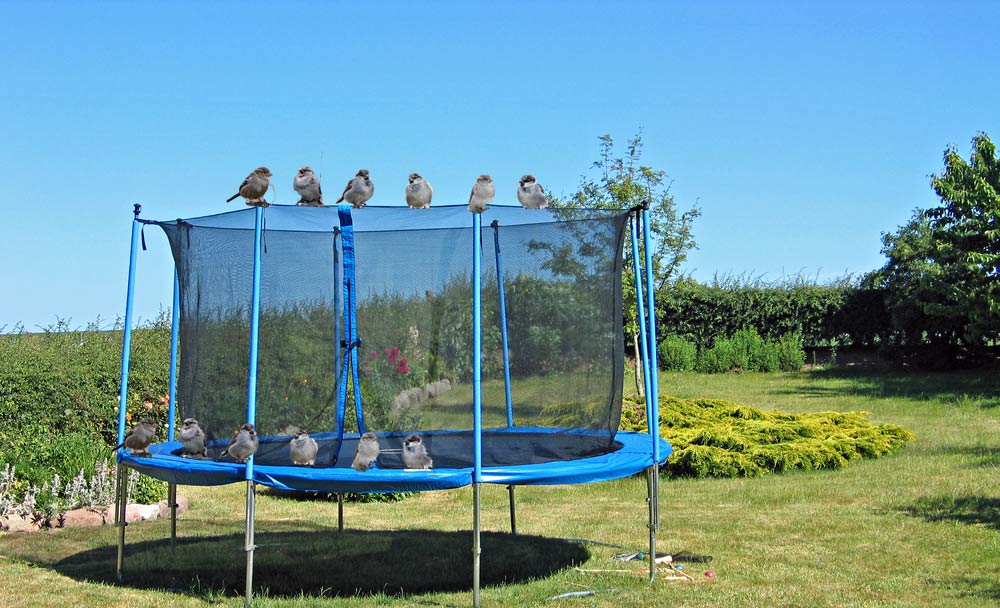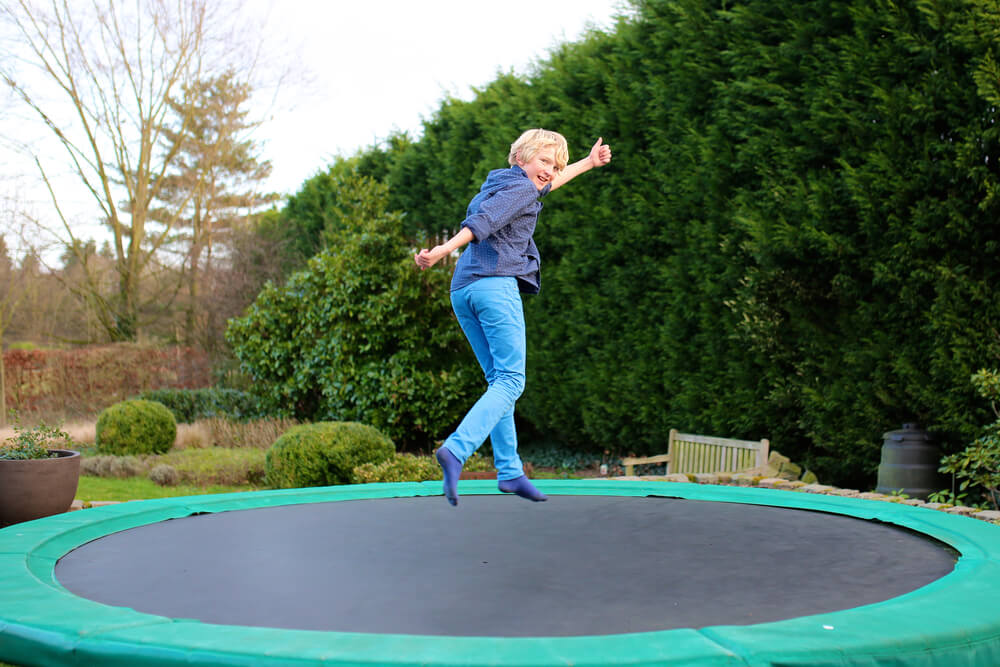We have seen the soaring popularity of inground trampolines among users in recent years. With its innovative features, it’s not hard to see why people fall in love with them.
From the looks to the functionality and even maintenance, inground trampolines have everything needed to topple the above-ground trampolines.
Nevertheless, the inground trampoline also has drawbacks, requiring your mitigation to ensure proper performance.
This article covers the inground trampoline pros and cons that we think all trampoline lovers should know for their benefit. Read on!
Inground Trampoline Pros
It is a Bit Safer
“Safety comes fast” we all know this phrase, so it’s only right to begin with and see why above-ground trampolines are regarded as safer.
Inground trampolines are wise to the major risk issues involving this bouncing device. These trampolines are installed close to the ground reducing the distance to the ground if someone falls off. Inground trampolines also eliminate metal frames culpable for most above-ground trampoline accidents.
Speaking of falling off, it is not that big an issue unless in rare circumstances, but we also believe in not taking anything to chance; you can attach a safety net to your inground trampoline, eliminating any chances of falling on the ground. Still, it is not a must.
Kids or pets may be underneath above-ground trampolines and get badly hurt, but inground trampolines eliminate those chances.
Of course, this doesn’t mean the trampoline is entirely safe. Someone can still get hurt after falling off an inground trampoline. It is also good to be watchful and advise kids on the safety tips of trampolines.
Inground Trampolines Requires Little Maintenance
Inground trampolines are a wonderful joy to people that don’t like a barrage of maintenance duties. They require less care, the complete opposite of above-ground trampolines, which require regular and proper maintenance to perform at their best.
If you also don’t have the budget to finance the seasonal maintenance costs, hope in, too, because that’s a non-issue for the in-ground trampoline. Above-ground trampolines are also the opposite, with money needed to replace parts and repair what is necessary.
For instance, during winter, the metal frames of above-ground trampolines made of steel tend to suffer damage from the reaction with snow. It makes disassembling the parts necessary to deal with the challenge. Not to forget that it is also necessary to take measures to prevent the windy conditions from blowing your trampoline away.
On the other hand, in-ground trampolines are scarcely harmed, and the chances of these hazards happening are slim because they are on the ground and hardly exposed to the weather.
Strong Winds Won’t Cause Problems.
Above-ground trampolines carry a huge risk with them, especially during windy conditions. Strong winds can send equipment flying and slam onto anything, including your home, power lines, the fence, or any nearby person or structure.
Inground trampolines being fixed firmly to the ground make even the strongest winds unable to pick up and send equipment flying at things or people.
They are Aesthetically Appealing
Most people with beautiful landscapes opt for inground trampolines just because they look better. It’s not that hard to see the elegant side of inground trampolines. The aesthetics of the low-profile device are pleasing and ensure that your yard’s natural look and feel remain uninterrupted.
Inground trampolines are ideal because they save you from caring for the grass beneath them. Above-ground trampolines are behind the killing of grass beneath them. So which one do you prefer? Fading grass beneath a normal trampoline or a simple hole with an inground trampoline above it, uninterested in the soft grass.
Simple Installation
Installing inground trampolines should be easy. Dig a 75-110cm deep hole. The center of the hole must be deeper. If the trampoline size is bigger, the deeper hole.
If you got a trampoline, you doubt you can do the job alone. You can use machinery to achieve what you need; machines also provide better results. If machinery is not possible, find at least one person to assist you.
A recommendation is that you install a weed barrier to prevent the growth of weeds. Some trampolines include weed barriers. But, you can also purchase them separately.
Inground Trampoline Cons
You Have to Sacrifice Portability
If you prefer a trampoline that can move around freely and enjoy bouncing on different parts of the yard, then maybe inground trampolines are not for you. They require substantial resources and effort to do so. Inground trampolines also need care during installation; if not, there is a huge risk of causing severe damage.
With above-ground trampolines, you can change locations. They need minimum effort to do so. If the current position is needed for something else, you will have to carry your trampoline to a different side.
High Installation Cost
Buying and installing inground trampolines can be quite a costly exercise. There are several installation costs, including excavation, drainage preparations, the building of the reinforced wall, and leveling of uneven surfaces, among others. The whole setup will cost you more than it would above-ground trampolines.
Most people may lack the expertise these activities require, so you should also add labor costs for proper installation. However, it is better to hire a professional because it will save you energy and time while guaranteeing professional installation.
On the flip side, above-ground trampolines are relatively affordable. They are also more straightforward to install, but it would cost no more than $150 to get the service done. The price mainly depends on the brand you bought from.
If you somehow need help with an above-ground trampoline, please hire a professional. The cost to hire an experienced one is generally more than $100. You are nonetheless sure of a fast and professional installation.
Ventilation Clearance
If you are to enjoy high bounces on your inground trampoline, airflow must be at the optimum; a process is easier said than done.
Above ground trampolines have a large space beneath them, enabling free and optimum air circulation; thus, you experience higher jumps. With limited space, inground trampolines may hinder proper airflow, causing less bounce on the trampoline.
Proper ventilation clearance thus plays a crucial part in ensuring good bouncing on your trampoline. Professionals advise digging a hole at least 9 inches from the trampoline to achieve this.
Drainage Can Be an Issue
If it rains heavily, making water levels in your yard exceed six inches, stagnant water may lead to issues with your inground trampoline. It will help if you take action immediately once you notice an accumulation of water around the frame or on the trampoline.
Afterward, it would be best that you remove any material that blocks the drainage system and install a sump pump close by.
Insert a drain pipe below the inground trampoline area to drain the water away and prevent pooling and buildup of mold.
The other option would be seeking expert advice and assistance to aid in draining the excess water away as soon as it starts to accumulate.
The type of soil in your yard is the major factor that affects drainage. Sandy soil will suck water into the ground much faster than other soils. Clay soil is a disadvantage and highly discouraged.
It Makes Garden Rearranging More Challenging
You now have a beautiful inground trampoline in your garden. Fine, but have you thought about how it will pan out if you want to rearrange your yard? That’s the con; it is difficult to rearrange your garden with the trampoline in the same place.
When planning, you must remember this limitation to avoid being restricted in your own space. Choose wisely the best place to install the trampoline; somewhere, obstruction of view or normal interaction among people other than those using the trampoline won’t be affected.
Another tip is that, before installation, you dig around the hole to remove small roots that cause damage when installing.
Final Word
Whether you own an in-ground trampoline or an above-ground trampoline, you will find that both have pros and cons. How you plan to deal with the cons is what matters most.
We know many families cannot compromise the safety of their loved ones, so we came up with an easy-to-understand article to ensure you are well informed on this device and able to make necessary adjustments where needed to prevent imminent danger.
If you were uncertain about whether to purchase an inground trampoline or not, we hope this article has made you think further into the matter.
We find in-ground trampolines safer, convenient, good-looking, and long-lasting without much maintenance. Good luck finding one for you and your loved ones.
Cheers!

